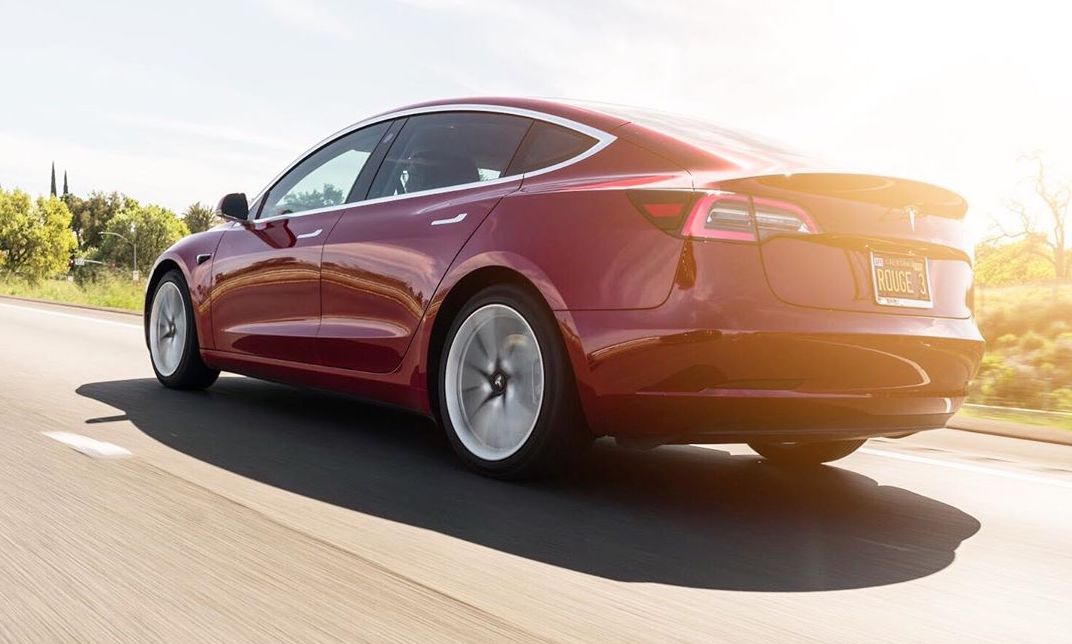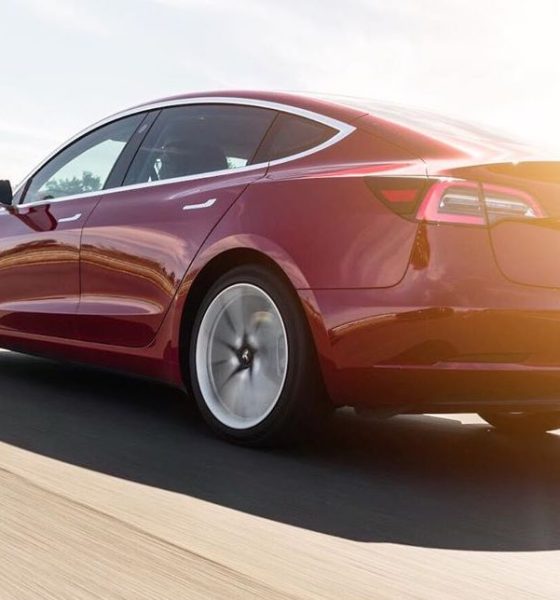

News
Legacy auto needs a ‘Tesla Approach’ on EVs because it’s quality, not quantity, that buyers want
Amidst the automotive segment’s ongoing shift to electric cars, it is almost common to see a carmaker announcing dozens of EVs coming in the coming years. Yet while such announcements are great for headlines, it appears that the time is nigh for legacy auto to shift to a “Tesla Approach” when it comes to their EV strategy. Carmakers can do this by focusing not on quantity, but on the quality of their electric cars.
Quantity Doesn’t Necessarily Mean Quality
Just recently, South Korean automaker Hyundai announced that it will have 23 global electric vehicles by 2025. This announcement is impressive, and it echoes the same theme as American automaker General Motors’ plan, which calls for 30 EVs by 2025. Even premium carmakers like BMW and Daimler seem to be taking the same approach, with the former pledging nine EVs by 2025 and the latter working on six electric vehicles today.
Yet inasmuch as these announcements warrant a lot of praise, it is pertinent to note that not all of the EVs coming out of legacy auto will necessarily be on the level of Tesla’s electric cars. Take GM’s best-selling electric car today, for example, the Wuling Hongguang Mini EV, which is sold in China. The vehicle outsold the domestically-produced Model 3 in China several times this year, but it’s important to highlight that the Mini EV is a bare-bones electric car that doesn’t even have airbags installed.
The Tesla Approach
Tesla’s approach to its electric cars is not unlike what tech giant Apple adopts. That is, the company releases only a few products, but each is extremely competitive in its respective segment. This could be seen in Tesla’s S3XY lineup, all of which could be described as premium electric vehicles in their own right. Critics could point out that the build quality and interior materials of Tesla’s electric cars are not yet in the level of veterans like Mercedes-Benz, but there’s no doubt that the Model S, Model 3, Model X, and Model Y are a cut above in terms of tech, performance, and features.
Apart from releasing just a few good electric cars, Tesla also focuses heavily on software and vertical integration. Tesla’s vehicles are not the only ones that can receive over-the-air updates today, but they are arguably the ones that receive them most frequently. The vertical integration that Tesla applies to its operations is pretty insane as well, with the company now looking to produce its own batteries and hardware.
One Good Electric Car
What seems to be lost among some legacy automakers today is the fact that the EV market is growing, and as it grows, it probably will not require dozens upon dozens of EVs being offered to customers. This is especially true if some of those electric cars are substandard or underwhelming at best. Instead, it may be a better idea for veteran carmakers to focus on creating only a few electric cars, with each one being good enough to stand against leaders like the Model S, or upstarts like the Lucid Air and the Rivian R1T. Even one good electric car will be better than dozens of uninspired EVs, after all.
Fortunately, this concept seems to be making its way to some carmakers now, albeit slowly. Porsche does not seem to be in a hurry to release a bunch of EVs, with the company focusing on the Taycan, the Taycan Cross Turismo, and the Macan EV. Ford seems to be focusing right now on the Mach-E and the F-150 Electric. These vehicles so far are being received pretty well by the electric vehicle community, with the Taycan and the Mach-E even receiving a personal welcome from Tesla CEO Elon Musk.

News
Tesla starts showing how FSD will change lives in Europe
Local officials tested the system on narrow country roads and were impressed by FSD’s smooth, human-like driving, with some calling the service a game-changer for everyday life in areas that are far from urban centers.

Tesla has launched Europe’s first public shuttle service using Full Self-Driving (Supervised) in the rural Eifelkreis Bitburg-Prüm region of Germany, demonstrating how the technology can restore independence and mobility for people who struggle with limited transport options.
Local officials tested the system on narrow country roads and were impressed by FSD’s smooth, human-like driving, with some calling the service a game-changer for everyday life in areas that are far from urban centers.
Officials see real impact on rural residents
Arzfeld Mayor Johannes Kuhl and District Administrator Andreas Kruppert personally tested the Tesla shuttle service. This allowed them to see just how well FSD navigated winding lanes and rural roads confidently. Kruppert said, “Autonomous driving sounds like science fiction to many, but we simply see here that it works totally well in rural regions too.” Kuhl, for his part, also noted that FSD “feels like a very experienced driver.”
The pilot complements the area’s “Citizen Bus” program, which provides on-demand rides for elderly residents who can no longer drive themselves. Tesla Europe shared a video of a demonstration of the service, highlighting how FSD gives people their freedom back, even in places where public transport is not as prevalent.
What the Ministry for Economic Affairs and Transport says
Rhineland-Palatinate’s Minister Daniela Schmitt supported the project, praising the collaboration that made this “first of its kind in Europe” possible. As per the ministry, the rural rollout for the service shows FSD’s potential beyond major cities, and it delivers tangible benefits like grocery runs, doctor visits, and social connections for isolated residents.
“Reliable and flexible mobility is especially vital in rural areas. With the launch of a shuttle service using self-driving vehicles (FSD supervised) by Tesla in the Eifelkreis Bitburg-Prüm, an innovative pilot project is now getting underway that complements local community bus services. It is the first project of its kind in Europe.
“The result is a real gain for rural mobility: greater accessibility, more flexibility and tangible benefits for everyday life. A strong signal for innovation, cooperation and future-oriented mobility beyond urban centers,” the ministry wrote in a LinkedIn post.
News
Tesla China quietly posts Robotaxi-related job listing
Tesla China is currently seeking a Low Voltage Electrical Engineer to work on circuit board design for the company’s autonomous vehicles.

Tesla has posted a new job listing in Shanghai explicitly tied to its Robotaxi program, fueling speculation that the company is preparing to launch its dedicated autonomous ride-hailing service in China.
As noted in the listing, Tesla China is currently seeking a Low Voltage Electrical Engineer to work on circuit board design for the company’s autonomous vehicles.
Robotaxi-specific role
The listing, which was shared on social media platform X by industry watcher @tslaming, suggested that Tesla China is looking to fill the role urgently. The job listing itself specifically mentions that the person hired for the role will be working on the Low Voltage Hardware team, which would design the circuit boards that would serve as the nervous system of the Robotaxi.
Key tasks for the role, as indicated in the job listing, include collaboration with PCB layout, firmware, mechanical, program management, and validation teams, among other responsibilities. The role is based in Shanghai.
China Robotaxi launch
China represents a massive potential market for robotaxis, with its dense urban centers and supportive policies in select cities. Tesla has limited permission to roll out FSD in the country, though despite this, its vehicles have been hailed as among the best in the market when it comes to autonomous features. So far, at least, it appears that China supports Tesla’s FSD and Robotaxi rollout.
This was hinted at in November, when Tesla brought the Cybercab to the 8th China International Import Expo (CIIE) in Shanghai, marking the first time that the autonomous two-seater was brought to the Asia-Pacific region. The vehicle, despite not having a release date in China, received a significant amount of interest among the event’s attendees.
Elon Musk
Elon Musk and Tesla AI Director share insights after empty driver seat Robotaxi rides
The executives’ unoccupied tests hint at the rapid progress of Tesla’s unsupervised Robotaxi efforts.

Tesla CEO Elon Musk and AI Director Ashok Elluswamy celebrated Christmas Eve by sharing personal experiences with Robotaxi vehicles that had no safety monitor or occupant in the driver’s seat. Musk described the system’s “perfect driving” around Austin, while Elluswamy posted video from the back seat, calling it “an amazing experience.”
The executives’ unoccupied tests hint at the rapid progress of Tesla’s unsupervised Robotaxi efforts.
Elon and Ashok’s firsthand Robotaxi insights
Prior to Musk and the Tesla AI Director’s posts, sightings of unmanned Teslas navigating public roads were widely shared on social media. One such vehicle was spotted in Austin, Texas, which Elon Musk acknowleged by stating that “Testing is underway with no occupants in the car.”
Based on his Christmas Eve post, Musk seemed to have tested an unmanned Tesla himself. “A Tesla with no safety monitor in the car and me sitting in the passenger seat took me all around Austin on Sunday with perfect driving,” Musk wrote in his post.
Elluswamy responded with a 2-minute video showing himself in the rear of an unmanned Tesla. The video featured the vehicle’s empty front seats, as well as its smooth handling through real-world traffic. He captioned his video with the words, “It’s an amazing experience!”
Towards Unsupervised operations
During an xAI Hackathon earlier this month, Elon Musk mentioned that Tesla owed be removing Safety Monitors from its Robotaxis in Austin in just three weeks. “Unsupervised is pretty much solved at this point. So there will be Tesla Robotaxis operating in Austin with no one in them. Not even anyone in the passenger seat in about three weeks,” he said. Musk echoed similar estimates at the 2025 Annual Shareholder Meeting and the Q3 2025 earnings call.
Considering the insights that were posted Musk and Elluswamy, it does appear that Tesla is working hard towards operating its Robotaxis with no safety monitors. This is quite impressive considering that the service was launched just earlier this year.








